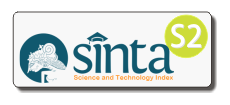The Determinants of Indonesian Islamic Rural Banks' Non-Performing Financing
DOI:
https://doi.org/10.14421/grieb.2021.091-03Keywords:
Non-Performing Financing, Islamic Rural Bank, and Non-Linear Autoregressive Model.Abstract
Islamic bank encounters a high financing risk because of scheme contract using the profit-loss sharing system leading to an agency problem. The non-performing financing of Islamic rural banks as small Islamic banks in Indonesia is above the maximum threshold and is higher than that of conventional rural banks as their competitors. This paper investigates the impact of bank characteristic variables and macroeconomic variables on the non-performing financing of Islamic rural banks. Our study employs aggregate Islamic rural banks data, spanning from January 2009 to December 2018. Non-linear autoregressive distributed lag model (NARDL) is applied to address this issue. Capital adequacy ratio obviously increases impaired financing and income diversification clearly reduces non-performing financing. More interestingly, domestic output and inflation have an asymmetric effect on non-performing financing. Economic downturns increase non-performing financing but economic upturns have no impact on non-performing financing. Meanwhile, inflation deteriorates non-performing financing but deflation does not reduce non-performing financing.
Downloads
 Abstract viewed: 914 times
|
Abstract viewed: 914 times
|
 PDF downloaded = 1084 times
PDF downloaded = 1084 times
References
Abedifar, P., Molyneux, P., & Tarazi, A. (2013). Risk in islamic banking. Review of Finance, 17(6), 2035–2096. https://doi.org/10.1093/rof/rfs041
Adebola, S. S. (2011). An ARDL approach to the determinants of non-performing loans in Islamic banking system in Malaysia. Kuwait Chapter of Arabian Journal of Business and Management Review, 1(2), 20–30.
Azmat, S., Skully, M., & Brown, K. (2015). Can Islamic banking ever become Islamic? Pacific Basin Finance Journal, 34, 253–272. https://doi.org/10.1016/j.pacfin.2015.03.001
Bahmani-Oskooee, M., & Saha, S. (2018). On the relation between exchange rates and stock prices: A non-linear ARDL approach and asymmetry analysis. Journal of Economics and Finance, 42(1), 112–137. https://doi.org/10.1007/s12197-017-9388-8
Banerjee, A., Dolado, J. J., & Mestre, R. (1998). Error-correction mechanism tests for cointegration in a single-equation framework. Journal of Time Series Analysis, 19(3), 267–283. https://doi.org/10.1111/1467-9892.00091
Beck, T., Demirgüç-Kunt, A., & Merrouche, O. (2013). Islamic vs. conventional banking: Business model, efficiency and stability. Journal of Banking and Finance, 37(2), 433–447. https://doi.org/10.1016/j.jbankfin.2012.09.016
Belkhaoui, S., Alsagr, N., & van Hemmen, S. F. (2020). Financing modes, risk, efficiency and profitability in Islamic banks: Modeling for the GCC countries. Cogent Economics and Finance, 8(1). https://doi.org/10.1080/23322039.2020.1750258
Chamberlain, T., Hidayat, S., & Khokhar, A. R. (2020). Credit risk in Islamic banking: Evidence from the GCC. Journal of Islamic Accounting and Business Research, 11(5), 1055–1081. https://doi.org/10.1108/JIABR-09-2017-0133
Firmansyah, I. (2015). Determinant of non performing loan: The case of Islamic bank in Indonesia. Buletin Ekonomi Moneter Dan Perbankan, 17(2), 241–258. https://doi.org/10.21098/bemp.v17i2.51
Ghenimi, A., Chaibi, H., & Omri, M. A. B. (2017). The effects of liquidity risk and credit risk on bank stability: Evidence from the MENA region. Borsa Istanbul Review, 17(4), 238–248. https://doi.org/10.1016/j.bir.2017.05.002
Ghosh, A. (2015). Banking-industry specific and regional economic determinants of non-performing loans: Evidence from US states. Journal of Financial Stability, 20, 93–104. https://doi.org/10.1016/j.jfs.2015.08.004
Hamid, F. S. (2017). The effect of market structure on banks’ profitability and stability: Evidence from ASEAN-5 countries. International Economic Journal, 31(4), 578–598. https://doi.org/10.1080/10168737.2017.1408668
Hassan, M. K., & Aliyu, S. (2018). A contemporary survey of Islamic banking literature. Journal of Financial Stability, 34, 12–43. https://doi.org/10.1016/j.jfs.2017.11.006
Hassan, M. K., Khan, A., & Paltrinieri, A. (2019). Liquidity risk, credit risk and stability in Islamic and conventional banks. Research in International Business and Finance, 48, 17–31. https://doi.org/10.1016/j.ribaf.2018.10.006
Hosen, M. N., & Muhari, S. (2019). Non-performing financing of Islamic rural bank industry in Indonesia. Banks and Bank Systems, 14(1), 20–28. https://doi.org/10.21511/bbs.14(1).2019.03
Kabir, M. N., & Worthington, A. C. (2017). The ‘competition–stability/fragility’ nexus: A comparative analysis of Islamic and conventional banks. International Review of Financial Analysis, 50, 111–128. https://doi.org/10.1016/j.irfa.2017.02.006
Kabir, M. N., Worthington, A., & Gupta, R. (2015). Comparative credit risk in Islamic and conventional bank. Pacific Basin Finance Journal, 34, 327–353. https://doi.org/10.1016/j.pacfin.2015.06.001
Kim, J., Yoon, J. C., & Jei, S. Y. (2020). An empirical analysis of Okun’s laws in ASEAN using time-varying parameter model. Physica A: Statistical Mechanics and Its Applications, 540, 123068. https://doi.org/10.1016/j.physa.2019.123068
Louhichi, A., & Boujelbene, Y. (2017). Bank capital, lending and financing behaviour of dual banking systems. Journal of Multinational Financial Management, 41, 61–79. https://doi.org/10.1016/j.mulfin.2017.05.009
Louzis, D. P., Vouldis, A. T., & Metaxas, V. L. (2012). Macroeconomic and bank-specific determinants of non-performing loans in Greece: A comparative study of mortgage, business and consumer loan portfolios. Journal of Banking and Finance, 36(4), 1012–1027. https://doi.org/10.1016/j.jbankfin.2011.10.012
Mahdi, B. S. I., & Abbes, M. B. (2018). Relationship between capital, risk and liquidity: A comparative study between Islamic and conventional banks in MENA region. Research in International Business and Finance, 45, 588–596. https://doi.org/10.1016/j.ribaf.2017.07.113
Mirza, N., Rahat, B., & Reddy, K. (2015). Business dynamics, efficiency, asset quality and stability: The case of financial intermediaries in Pakistan. Economic Modelling, 46, 358–363. https://doi.org/10.1016/j.econmod.2015.02.006
Mirzaei, A., Moore, T., & Liu, G. (2013). Does market structure matter on banks’ profitability and stability? Emerging vs. advanced economies. Journal of Banking and Finance, 37(8), 2920–2937. https://doi.org/10.1016/j.jbankfin.2013.04.031
Muhammad, R., Suluki, A., & Nugraheni, P. (2020). Internal factors and non-performing financing in Indonesian Islamic rural banks. Cogent Business and Management, 7(1), 1–12. https://doi.org/10.1080/23311975.2020.1823583
Pesaran, M. H., Shin, Y., & Smith, R. J. (2001). Bounds testing approaches to the analysis of level relationships. Journal of Applied Econometrics, 16(3), 289–326. https://doi.org/10.1002/jae.616
Rahim, S. R. M., & Zakaria, R. H. (2013). Comparison on stability between Islamic and conventional banks in Malaysia. Journal of Islamic Economics, Banking and Finance, 9(3), 131–149. https://doi.org/10.12816/0001618
Rahmah, A. Z., & Armina, S. H. (2020). Macro and micro determinants of the non-performing finance: The case of Indonesian Islamic bank. Jurnal Ekonomi & Keuangan Islam, 6(1), 34–41. https://doi.org/10.20885/jeki.vol6.iss1.art4
Raza, N., Shahzad, S. J. H., Tiwari, A. K., & Shahbaz, M. (2016). Asymmetric impact of gold, oil prices and their volatilities on stock prices of emerging markets. Resources Policy, 49, 290–301. https://doi.org/10.1016/j.resourpol.2016.06.011
Setiawan, C., & Bagaskara, B. (2016). Non-performing financing (NPF) and cost efficiency of Islamic banks in Indonesia period 2012Q1 to 2015Q2. Journal of Emerging Issue in Economics, Finance and Banking, 5(1), 1816–1831.
Shin, Y., Yu, B., & Greenwood-nimmo, M. (2014). Modeling asymmetric cointegration and dynamic multipliers in a Nonlinear ARDL framework. In R. Sickels, & W. Horrace (Eds.), Festschrift in Honor of Peter Schmidt: Econometric Methods and Applications (pp. 281-314). Springer, New York. https://doi.org/10.1007/978-1-4899-8008-3
Tang, B., & Bethencourt, C. (2017). Asymmetric unemployment-output tradeoff in the Eurozone. Journal of Policy Modeling, 39(3), 461–481. https://doi.org/10.1016/j.jpolmod.2017.01.003
Trad, N., Trabelsi, M. A., & Goux, J. F. (2017). Risk and profitability of Islamic banks: A religious deception or an alternative solution? European Research on Management and Business Economics, 23(1), 40–45. https://doi.org/10.1016/j.iedeen.2016.09.001
Trinugroho, I., Risfandy, T., & Ariefianto, M. D. (2018). Competition , diversification , and bank margins: Evidence from Indonesian Islamic rural banks. Borsa Istanbul Review, 18(4), 349–358. https://doi.org/10.1016/j.bir.2018.07.006
Waemustafa, W., & Sukri, S. (2016). Systematic and unsystematic risk determinants of liquidity risk between Islamic and conventional banks. International Journal of Economics and Financial Issues, 6(4), 1321–1327.
Warninda, T. D., Ekaputra, I. A., & Rokhim, R. (2019). Do mudarabah and musharakah financing impact Islamic bank credit risk differently? Research in International Business and Finance, 49, 166–175. https://doi.org/10.1016/j.ribaf.2019.03.002
Widarjono, A. (2020a). Asymmetric Okun’s law in an emerging market: ASEAN-3 case. Economics and Sociology, 13(3), 203–217. https://doi.org/10.14254/2071-789X.2020/13-3/12
Widarjono, A. (2020b). Stability of Islamic banks in Indonesia: Autoregressive distributed lag approach. Jurnal Keuangan Dan Perbankan, 24(1), 40–52. https://doi.org/10.26905/jkdp.v24i1.3932
Widarjono, A., Anto, M. B. H., & Fakhrunnas, F. (2020). Financing risk in Indonesian islamic rural banks: Do financing products matter? The Journal of Asian Finance, Economics and Business, 7(9), 305–314. https://doi.org/10.13106/jafeb.2020.vol7.no9.305
Widarjono, A., & Rudatin, A. (2021). Financing diversification and Indonesian Islamic bank’s non-performing financing. Jurnal Ekonomi & Keuangan Islam, 7(1), 45–58.
Widarjono, A., Shidiqie, J. S. A., & El Hasanah, L. L. N. (2021). The sensitivity of the Indonesian Islamic stock prices to macroeconomic variables: An asymmetric approach. Journal of Asian Finance, Economics and Business, 8(3), 181–190. https://doi.org/10.13106/jafeb.2021.vol8.no3.0181
Downloads
Published
Issue
Section
License
Global Review of Islamic Economics and Business is licensed under a
Creative Commons Attribution-ShareAlike 4.0 International License



















